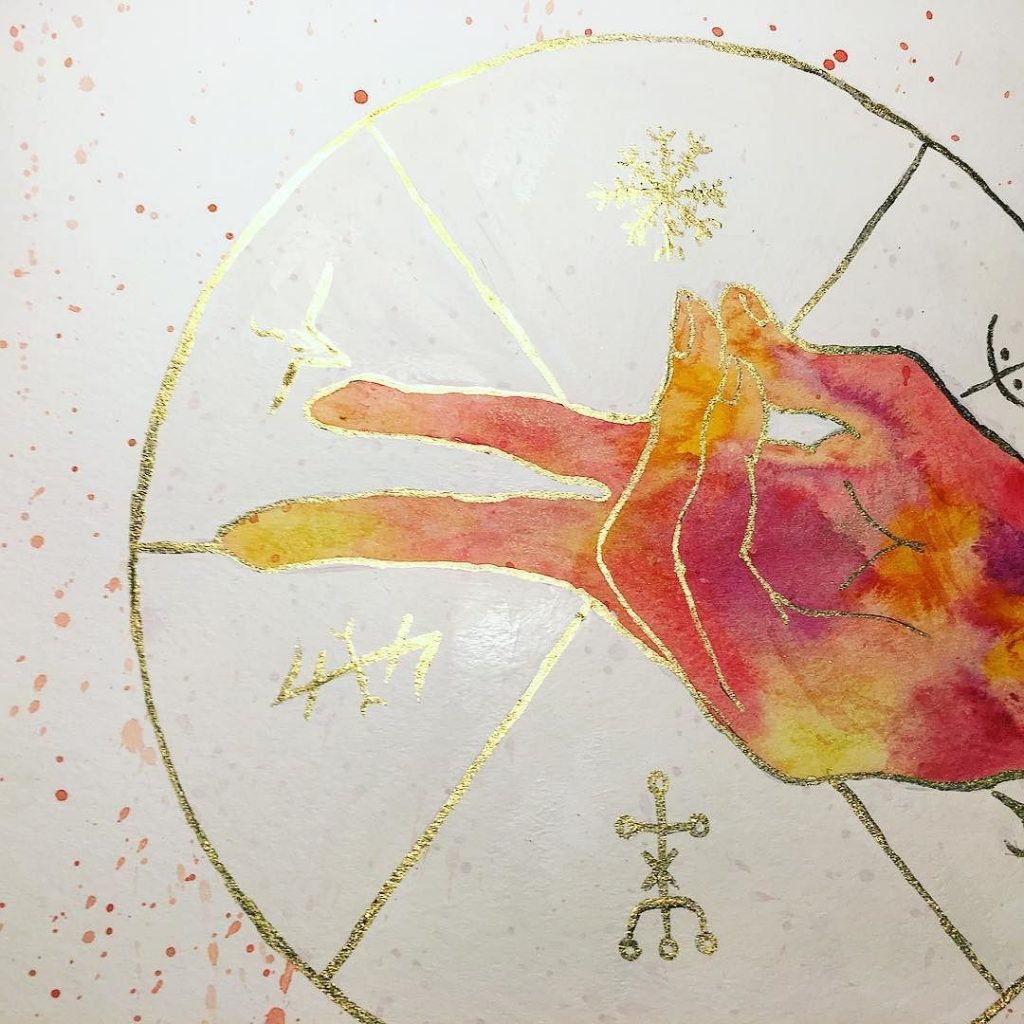Exercise 4
Breathing
Difficulty level – 1 (easy)
Time commitment – 10 minutes everyday

Breathing is a fundamental life process. Our life is a collection of breaths – and we live between our first inhalation, and our last exhalation. The objective of this exercise is to help you connect with your breath, and introduce you to the science of prānāyāma.
A few basics:
- Always breathe through your nose, unless otherwise indicated.
- While inhaling, your stomach expands (due to expansion of the diaphragm), and during exhalation, your stomach moves inward, towards your spine. You can notice (and correct) this by placing your right palm on your stomach while breathing.
- Always breathe in and breathe out slowly and steadily – no sudden rush of air in and out of your nostrils. Also, the incoming breath and outgoing breaths should be for the same duration. Visualise a calm sea shore, where the waves gently come towards the beach, and recede.
- For this exercise, the process of breathing should be as quiet as possible.
How you do it

Sit in a comfortable position. Ideally in Sukhasana or Vajrasana. Avoid sitting on a chair. Keep your back straight. If you find this difficult, try the Vajrasana posture since the back is naturally straight in this āsana. Close your eyes and take in a deep breath.
By deep breath, I mean breathe in slowly, through your nostrils, feeling the air fill your lungs, your stomach pushing out gently as your diaphragm expands, and your rib-cage expanding so as to accommodate your lungs at full capacity. Ideally, count to 8 (tick-tick 1, tick-tick 2..) at a minimum in your head, to get a full inhalation. But if you find that difficult, then a 5-count is also good enough for starters.
Visualisation – This is key to the exercise. While inhaling, visualise positivity – can be a beautiful garden, the first rains, a person or pet you love – anything that makes you feel positive and loved. Feel the positivity radiate into you.
Hold for a quick moment, and exhale – as slowly as you inhaled. through your nostrils, air flowing out gently, emptying the lungs, till all the air that you inhaled, is released. The count will be the same as the inhalation (8 count).
Visualisation – While exhaling, visualise your negative emotions – stress at work, anger due to a recent argument, anxiety due to some uncertainty – anything that causes a negative feeling in you. Feel the negativity flow out of you, and away from you.
This is one cycle. Repeat for 3 minutes, and build up to 6 minutes by the end of the 21-day sādhanā.
At the end, join your hands together in Anjali Mudra (namaste), and feel thankful for all the blessings in your life. Genuinely thankful. Open your eyes.
Breathing – the key to your emotions
We live our lives between two breaths. Breathing is a process that gives us life, and slowly kills us as well. Science has demonstrated that the slower the breath rate, the longer the life. A tortoise breathes very slowly, approximately four breaths per minute and lives for well over a hundred years. Dogs take in around twenty four breaths per minute at rest and live for only up to thirteen years. Humans take in fifteen breaths per minute on an average.
In Yoga, breathing comprises three main steps – inhalation, or pūraka, rechaka, or exhalation, and kumbhaka, or retention.
An extension of the ‘retention phase’ of breathing, enables a certain trance-like state, that is conducive to enlightenment. For beginners however, it is important to be conscious of your breath, as a start. We can do this by breathing deliberately – observing the incoming and outgoing breaths and keeping count of our inhalation and exhalation (an equal count is ideal).
This breathing exercise is basic, yet very effective. You can do this multiple times everyday – just 2-3 minute breathers (pardon the pun) between your work sessions. And also everytime you feel a negative emotion rising within you.
My experience is that these 2 minutes can alleviate the most negative situations.
A good way to measure this is to combine this exercise with the Aparigraha through writing exercise. As you feel a negative emotion rising – possibly a bad email, or a tough phone call, or an argument with your spouse or parents – perform the aparagriha writing exercise first, and then this breathing exercise. Trust me, it makes a noticeable difference, and you will find yourself much more calmer and composed once you are through:)
अपाने जुह्वति प्राणं प्राणेऽपानं तथापरे ।
प्राणापानगती रुद्ध्वा प्राणायामपरायणाः ।
apāne juhvati prāṇaṁ prāṇe ’pānaṁ tathāpare
prāṇāpāna-gatī ruddhvā prāṇāyāma-parāyaṇāḥ
And there are even others who are inclined to the process of breath restraint to remain in trance, and they practice stopping the movement of the outgoing breath into the incoming, and incoming breath into the outgoing, and thus at last remain in trance, stopping all breathing.
Bhagavad Gīta
दह्यन्ते ध्मायमानानां धातूनां हि यथा मलाः ।
तथेन्द्रियाणां दह्यन्ते दोषाः प्राणस्य निग्रहात् ॥ ७१ ॥
dahyante dhmāyamānānāṃ dhātūnāṃ hi yathā malāḥ |
tathendriyāṇāṃ dahyante doṣāḥ prāṇasya nigrahāt || 71 ||
Just as the impurities of metallic ores are consumed when they are blasted, even so are the taints of the senses consumed through the suspension of breath.
Manusmiriti 6.71
